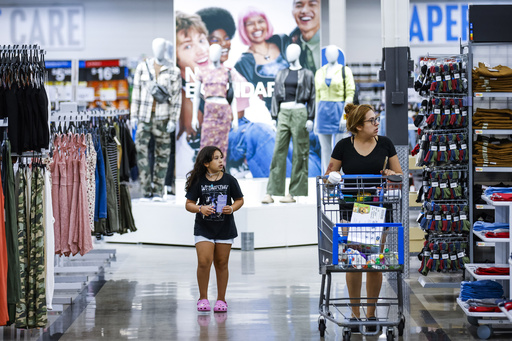Mass market retailers in the United States are enticing customers with deals on back-to-school essentials such as computers, clothing, and more at budget-friendly prices. They are also promoting “buy now, pay later” services as a way for shoppers to manage the expenses of gearing up for the school year in style. This approach is aimed at encouraging consumers, especially those in lower income brackets, to make purchases during the back-to-school season, which is considered the retail industry’s second most crucial period after the winter holidays.
Various forecasts suggest that back-to-school sales for this year are expected to either remain the same as last year or decrease slightly. Rising costs of essentials like food and rent, despite a decrease in inflation from previous levels, are causing shoppers to be more cautious with their spending. Shoppers across different income levels are showing a preference for shopping second-hand or choosing store brands over nationally advertised brands, which are generally more affordable.
One shopper, Jasleen Reyes, a mother of three and a hotel operations manager in Harlem, New York, mentioned that the main factor influencing her spending habits is inflation. She plans to spend around $3,200-$3,400 on back-to-school items this year, an increase of $1,500 from last year, primarily due to purchasing a laptop for her college student son. Reyes prefers using a “buy now, pay later” option as it allows her to split costs interest-free over two months, rather than incurring interest on a credit card balance.
Retailers are starting the back-to-school season earlier, partly driven by events like Amazon’s Prime Day, which creates momentum for discounts. Target, for instance, offered school supplies for under $20 in June, a month earlier than the previous year. The usage of “buy now, pay later” services is increasing heading into the back-to-school season, with $6.75 billion worth of online purchases in the U.S. made through these services in June, a 14.3% jump from the previous year.
There are concerns raised by consumer advocates about the potential consequences of the growing popularity of “buy now, pay later” services, including the likelihood of consumers accumulating more debt. Despite these concerns, companies like Afterpay have seen significant growth in back-to-school-related purchases, particularly in categories like apparel, electronics, and accessories. The National Retail Federation forecasts back-to-school sales to reach $38.8 billion this year, making it the second-highest figure recorded since 2007. Deloitte estimates back-to-school spending to be around $31.3 billion, similar to the previous year.


